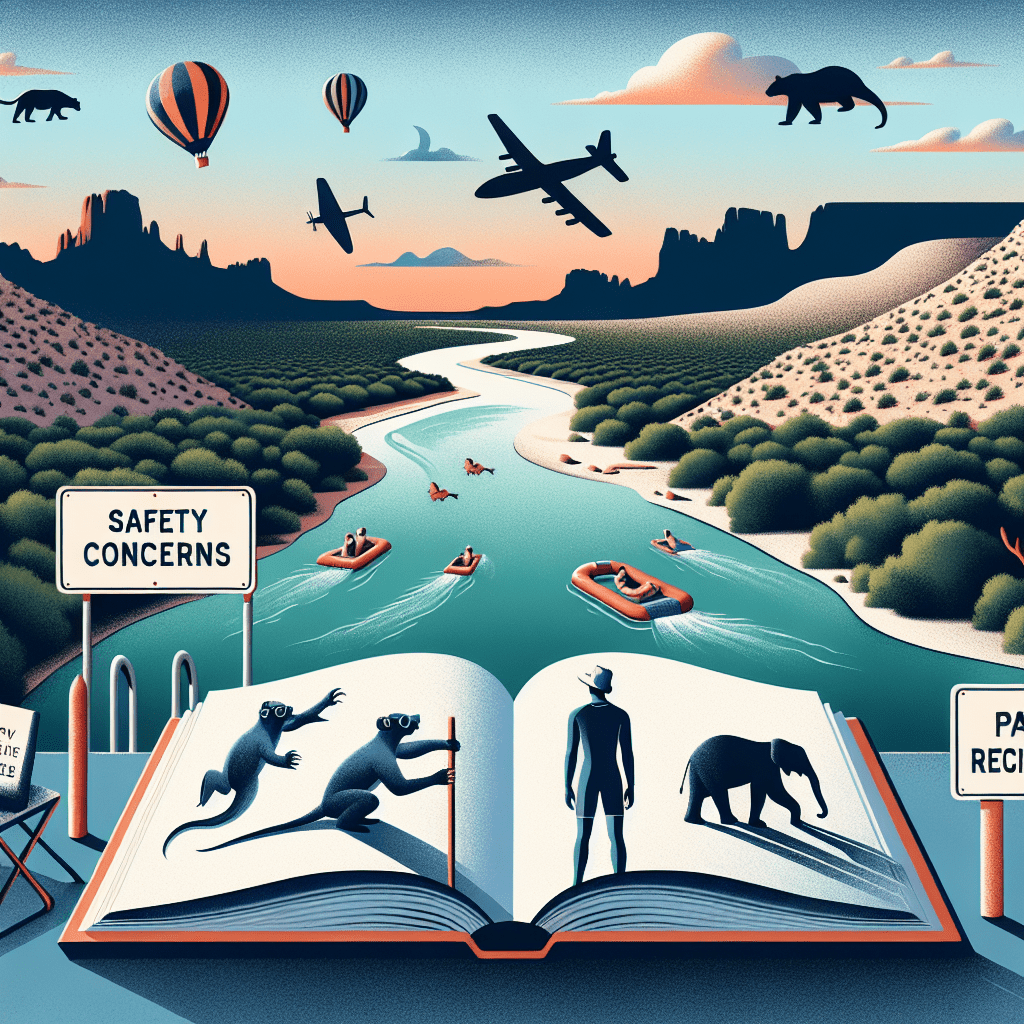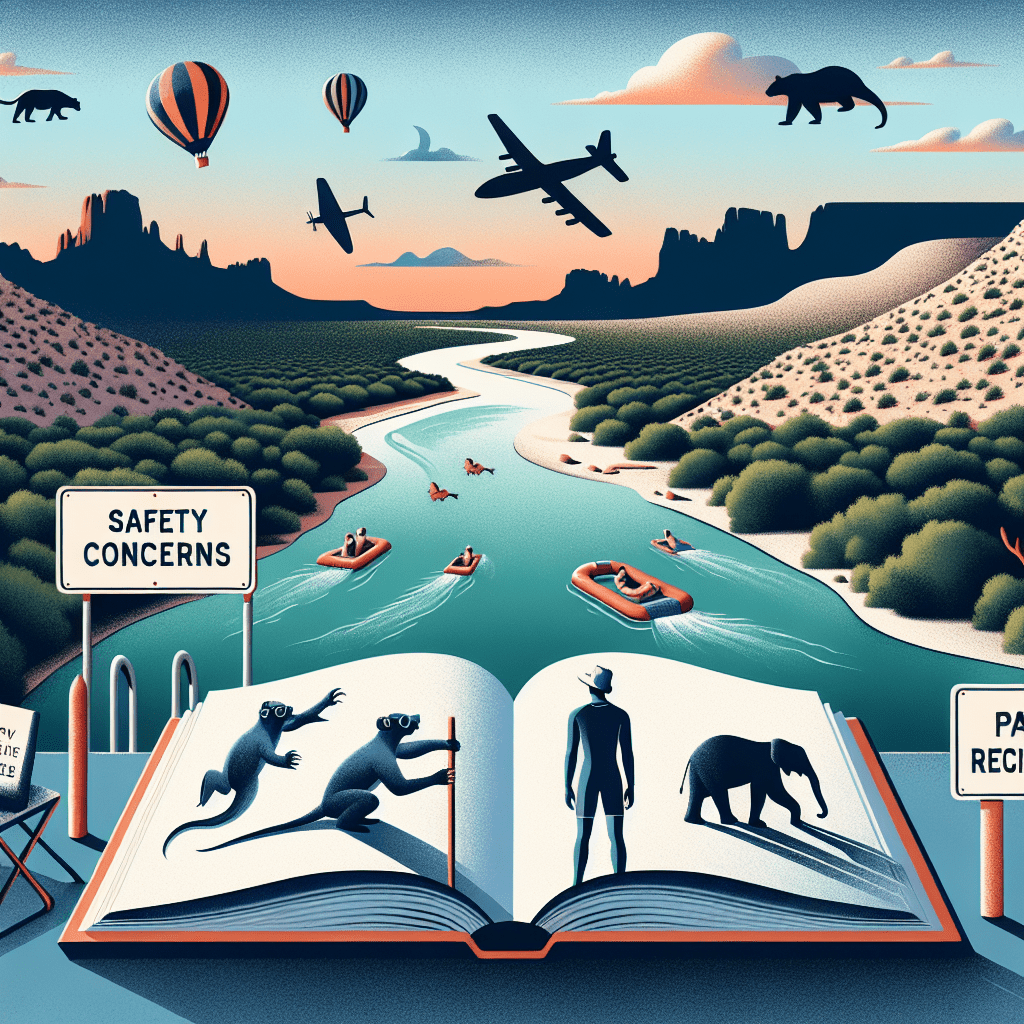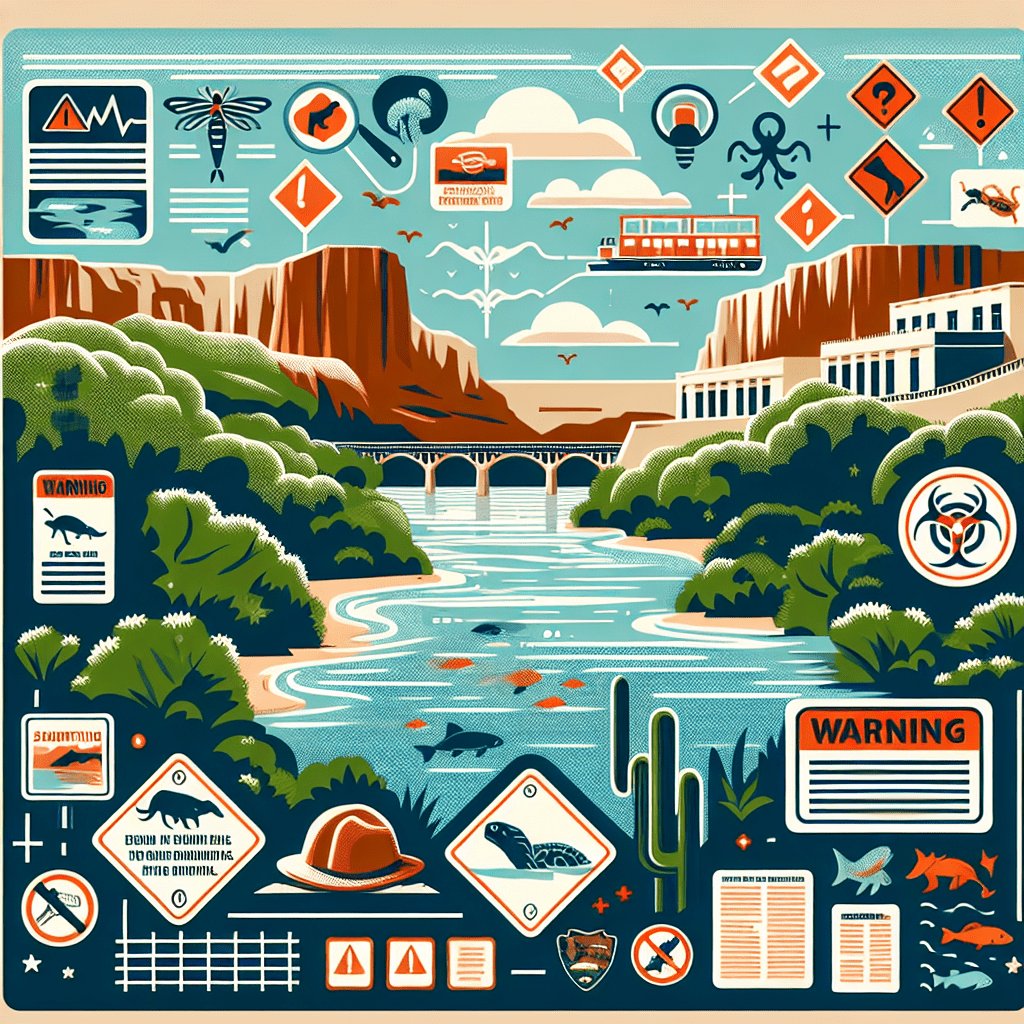
Thinking about taking a refreshing dip in the famous Rio Grande at Big Bend National Park? Well, you’re not alone! Nestled in the picturesque landscapes of Texas, this breathtaking national park has been capturing the hearts of adventure seekers for years. However, before you grab your swimsuit and head out, there are a few things we should tell you about swimming in the Rio Grande at Big Bend National Park.

Natural Swimming Areas
Big Bend National Park is home to several natural swimming areas that offer visitors a unique and refreshing way to cool off during the hot Texas summers. These natural swimming areas include Boquillas Canyon, Hot Springs, and Santa Elena Canyon. We highly recommend exploring these pristine oases to make the most of your visit to Big Bend National Park.
Boquillas Canyon
Boquillas Canyon is a picturesque spot along the Rio Grande where visitors can enjoy swimming in the calm and clear waters of the river. The canyon walls provide a stunning backdrop as you take a dip and cool off from the desert heat. The water here is usually calm, making it an ideal spot for a relaxing swim. Just be sure to check the water conditions before diving in!
Hot Springs
If you’re looking for a unique swimming experience, the Hot Springs at Big Bend National Park is the place to go. These natural hot springs are located along the Rio Grande and offer visitors the opportunity to soak in warm mineral-rich waters while surrounded by breathtaking natural beauty. It’s a perfect way to unwind and relax after a day of hiking or exploring the park.
Santa Elena Canyon
Santa Elena Canyon is another popular spot for those looking to enjoy a swim in the Rio Grande. This majestic canyon provides a stunning backdrop as you take a swim in the cool waters of the river. The currents here can be stronger than in other areas, so it’s important to exercise caution and be aware of your surroundings. But don’t let that deter you from enjoying a swim in this beautiful location.
Safety Considerations
While swimming in the Rio Grande can be a fun and enjoyable experience, it’s important to keep safety in mind. The following safety considerations should be taken into account before taking a dip in the river.
Water Conditions
Before entering the water, always check the water conditions. The water levels and temperature can vary depending on the time of year and recent rainfall. It’s important to know if the water is safe for swimming and if there are any potential hazards to be aware of. The park’s visitor centers or rangers can provide up-to-date information on water conditions.
River Currents
The Rio Grande can have strong currents, especially during periods of higher water flow. It’s essential to be cautious and aware of the current’s strength before entering the water. Always swim within your abilities and avoid areas with fast-moving water. If you are uncertain about the current conditions, it’s best to err on the side of caution and avoid swimming.
Flash Floods
Flash floods can occur suddenly, especially during the monsoon season in late summer. These floods can be extremely dangerous and life-threatening. It’s crucial to be aware of weather conditions and any flash flood warnings before venturing into the water. If there is a possibility of a flash flood, it’s best to stay out of the water entirely and seek higher ground.
Wildlife Hazards
Big Bend National Park is home to a diverse array of wildlife, some of which can pose potential hazards to swimmers. It’s important to be aware of these wildlife hazards and take appropriate precautions when swimming in the Rio Grande.
Snakes
Snakes, including venomous species such as rattlesnakes, are present in the park’s surrounding areas, including near the riverbanks. Be cautious when exploring and swimming near vegetation or rocky areas where snakes may be hiding. If you encounter a snake, give it a wide berth and leave it alone. Being aware of your surroundings and using common sense can help minimize the risks associated with snakes.
Alligators
While alligators are not native to Big Bend National Park, occasional sightings have been reported. If you see an alligator, maintain a safe distance and avoid any interactions. It’s essential not to approach or feed these animals as they can become aggressive. Remember, it is always best to admire wildlife from a safe distance and respect their natural habitats.
Mosquitoes
Mosquitoes can be a nuisance in the park, especially during the warmer months. While swimming in the Rio Grande, consider applying insect repellent to help ward off these pesky insects. Wearing long sleeves and pants can also provide extra protection from mosquito bites. Be sure to follow the instructions on the repellent and use it as directed to avoid any adverse reactions.
Waterborne Illnesses
Swimming in natural bodies of water, including the Rio Grande, carries the risk of waterborne illnesses. It’s important to be aware of the potential bacteria and parasites that may be present in the water.
Bacteria
Bacteria, such as Escherichia coli (E. coli), can be present in natural water sources, including the Rio Grande. These bacteria can cause gastrointestinal issues and other illnesses if ingested. It’s essential to avoid swallowing water while swimming and to practice good hygiene, such as washing your hands thoroughly before eating or drinking.
Parasites
Parasites, such as Cryptosporidium and Giardia, can also be found in natural water sources. These parasites can cause gastrointestinal infections when ingested. To reduce the risk of contracting these parasites, it’s important to avoid swallowing water while swimming. Additionally, if you plan on using the river water for any personal needs, such as drinking or cooking, it’s vital to treat the water appropriately to eliminate any potential parasites.

Seasonal Variations
The Rio Grande experiences seasonal variations that can impact the swimming experience. It’s essential to be aware of these variations to plan your visit accordingly.
Water Temperature
The water temperature in the Rio Grande can vary significantly depending on the time of year and location. During the summer months, the water can reach pleasant temperatures, allowing for an enjoyable swim. However, during the colder months, the water can become chilly, making swimming less comfortable. It’s always a good idea to check the current water temperatures before diving into the river.
Water Levels
Water levels in the Rio Grande are subject to change throughout the year. During periods of heavy rainfall or snowmelt, water levels can rise, leading to stronger currents and potentially dangerous conditions for swimming. Conversely, during periods of drier weather, water levels may be lower, resulting in shallower areas. To ensure a safe swimming experience, it’s crucial to monitor water levels and be aware of any potential hazards caused by fluctuating water levels.
Permitted Activities
Big Bend National Park allows certain activities in the Rio Grande, including fishing, rafting, and canoeing. These activities provide unique ways to experience the river and its surroundings.
Fishing
Fishing is a popular activity in the Rio Grande, allowing visitors to try their luck at catching freshwater fish such as bass and catfish. Proper fishing licenses are required, and fishing regulations must be followed to protect the park’s ecosystem. If you choose to fish, be sure to familiarize yourself with the fishing regulations beforehand and practice catch-and-release to preserve the river’s natural balance.
Rafting
For those seeking an adrenaline rush, rafting in the Rio Grande offers an exciting adventure. Whitewater rafting trips are available, providing a thrilling experience as you navigate the river’s rapids. However, this activity requires experience and proper safety equipment, so it’s best to join a guided tour or seek advice from park rangers before attempting whitewater rafting.
Canoeing
Canoeing provides a more leisurely way to explore the Rio Grande. The calm and clear waters of certain sections of the river make it ideal for a peaceful canoeing trip. Whether you’re a beginner or an experienced paddler, canoeing in the Rio Grande allows you to immerse yourself in the natural beauty of Big Bend National Park at your own pace.
Prohibited Activities
While there are several permitted activities in the Rio Grande, there are also prohibited activities that visitors must adhere to in order to protect both themselves and the park’s natural resources.
Swimming without a Life Jacket
Due to the potential hazards associated with swimming in a natural body of water, it is prohibited to swim without a life jacket in the Rio Grande at Big Bend National Park. Wearing a life jacket ensures your safety and can help prevent accidents or drowning. It is essential to follow this regulation and prioritize your safety when enjoying the river.
Jumping from High Rocks
Jumping from high rocks into the Rio Grande is prohibited to prevent injuries. The depth and conditions of the water can change, and what may appear safe can be dangerous. Jumping from high rocks can result in severe injuries, including head and spinal injuries. It is vital to respect this rule and avoid jumping from high rocks in the interest of your safety.
Park Regulations
Big Bend National Park has specific regulations in place to ensure the safety and preservation of the park’s resources. These regulations are enforceable, and violators may face consequences for non-compliance.
Enforcement
Park rangers are responsible for enforcing the regulations within Big Bend National Park, including those pertaining to the Rio Grande. They are there to ensure visitor safety and protect the park’s natural environment. If you have any questions or concerns regarding park regulations, do not hesitate to approach a ranger for clarification or assistance.
Consequences of Violations
Violating park regulations, including those related to swimming in the Rio Grande, can result in penalties. Depending on the severity of the violation, consequences may range from warnings and citations to fines and even expulsion from the park. It’s important to respect the rules and regulations to preserve the park’s beauty and ensure the safety of all visitors.
Alternatives to Swimming
If swimming in the Rio Grande is not feasible or appealing to you, don’t worry- there are plenty of alternative activities to enjoy at Big Bend National Park. Here are a few suggestions:
Hiking
Big Bend National Park offers a vast network of trails for hiking enthusiasts. From leisurely walks to challenging mountain hikes, there is a trail for every skill level. Hiking allows you to explore the park’s unique landscapes, encounter wildlife, and immerse yourself in its natural wonders.
Scenic Drives
If you prefer to enjoy the beauty of Big Bend National Park from the comfort of your vehicle, there are several scenic drives to choose from. These drives offer breathtaking views of the park’s diverse landscapes, including canyons, mountains, and deserts. Be sure to stop at designated overlooks along the way to take in the stunning vistas.
Visitor Centers
Take some time to visit the various visitor centers within Big Bend National Park. These centers provide valuable information about the park’s history, geology, flora, and fauna. Knowledgeable park rangers are available to answer questions and offer guidance on how to make the most of your visit. Visitor centers also often feature exhibits and educational displays that can enhance your understanding and appreciation of the park.
Conclusion
Swimming in the Rio Grande at Big Bend National Park can be a fun and rejuvenating experience, but it’s crucial to prioritize safety and adhere to park regulations. By being aware of water conditions, potential wildlife hazards, and waterborne illnesses, you can enjoy a safe and enjoyable swim in the natural swimming areas of Boquillas Canyon, Hot Springs, and Santa Elena Canyon. Remember to respect the park’s rules, consider alternative activities, and always prioritize the well-being of yourself and the park’s natural resources. With these precautions in mind, you’re sure to have an unforgettable time exploring the wonders of Big Bend National Park.